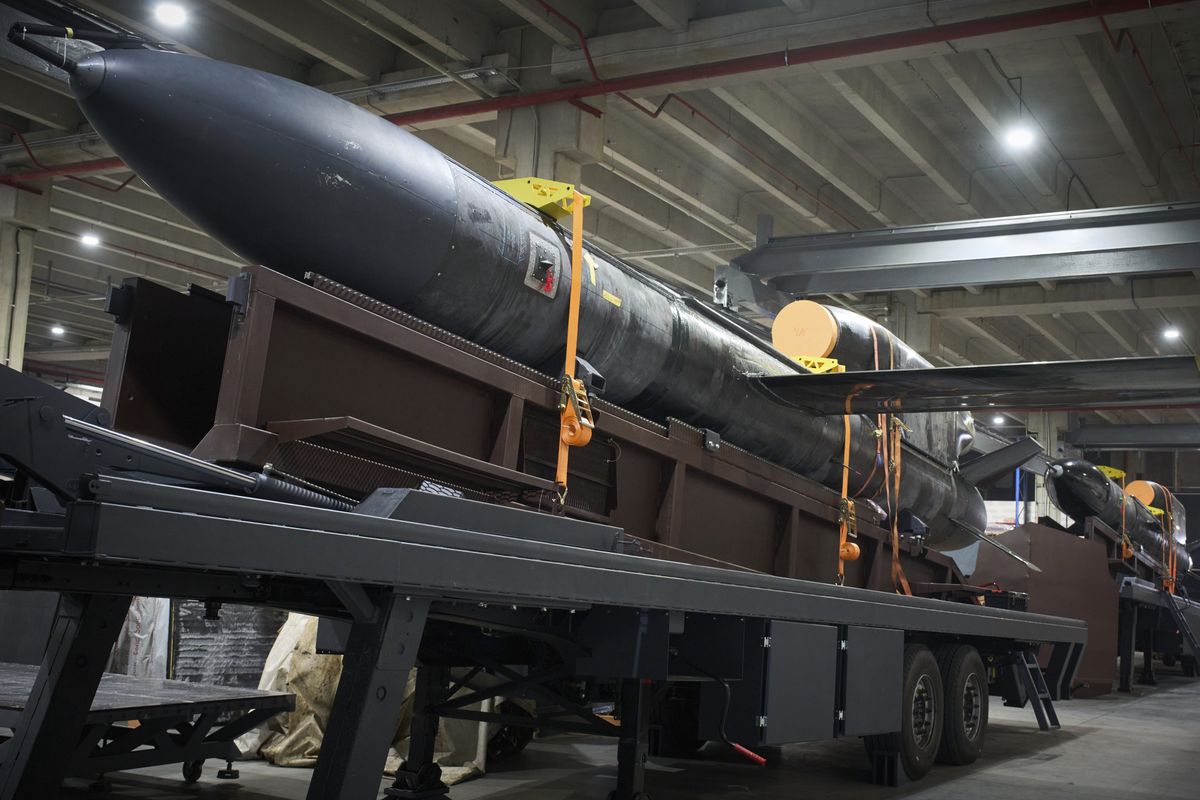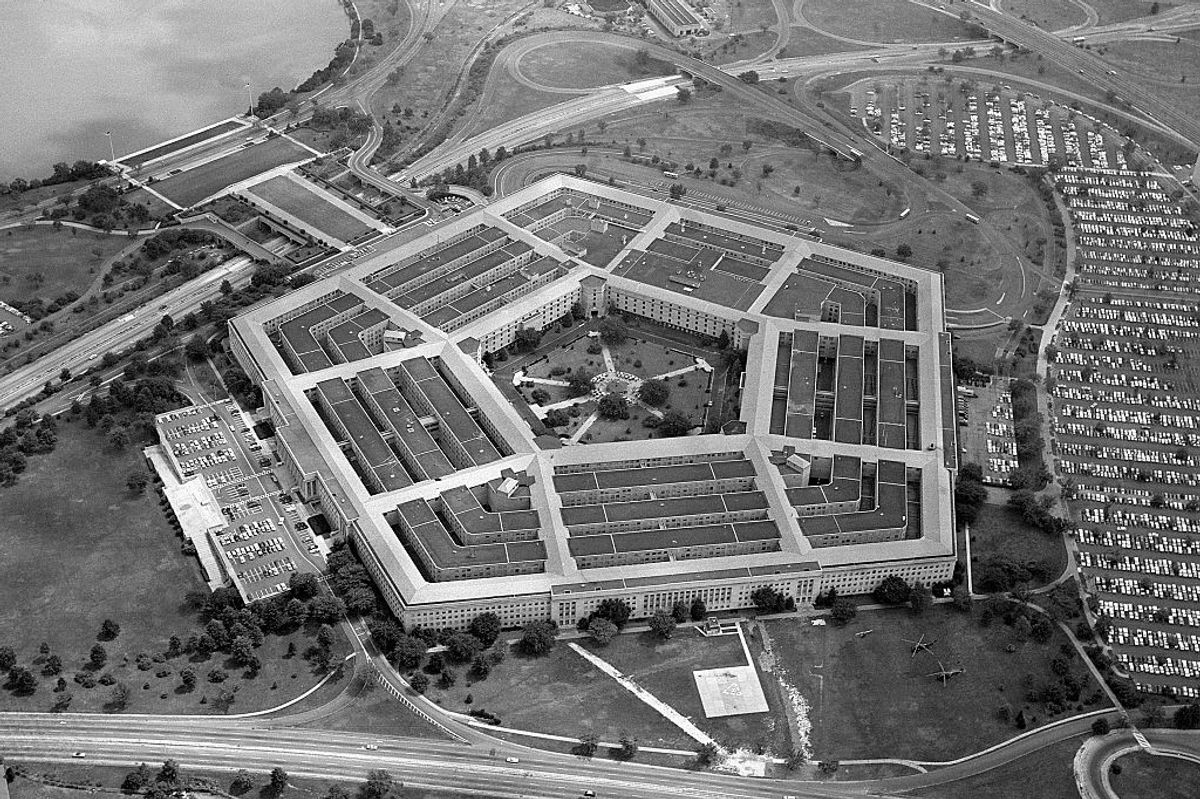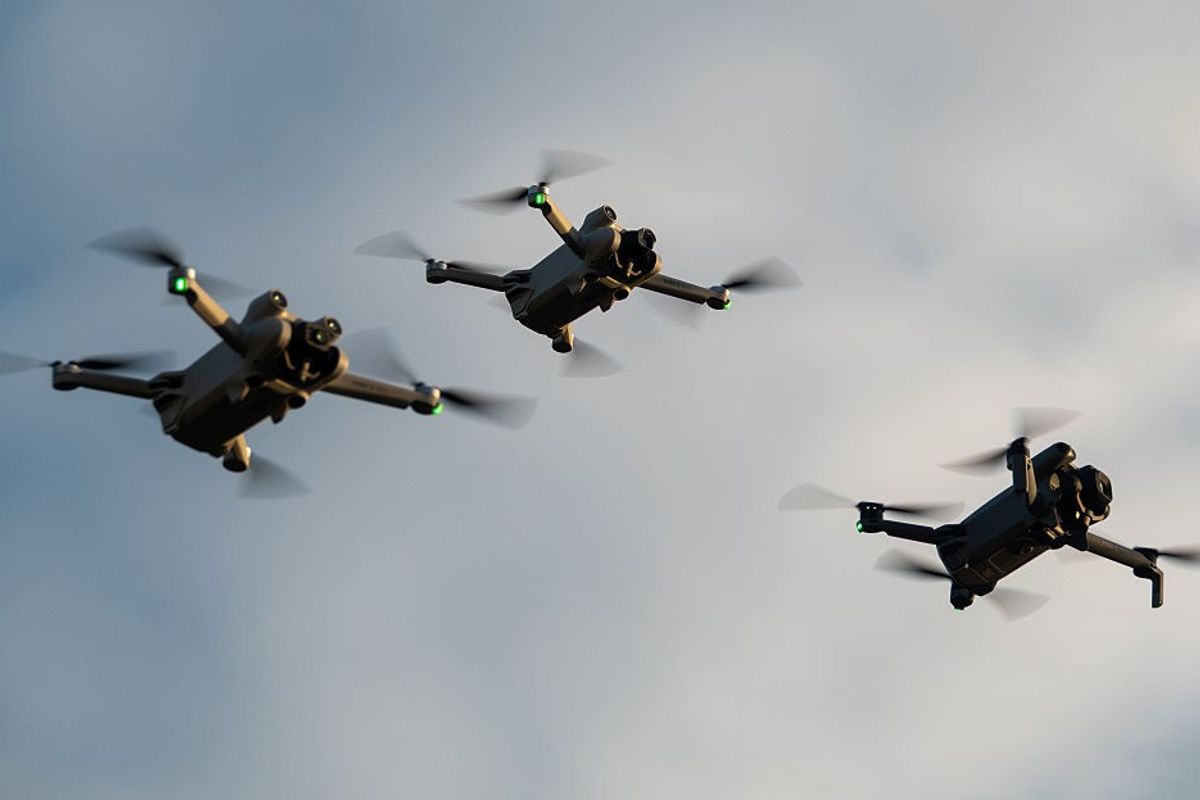SUBSCRIBER+EXCLUSIVE INTERVIEW — Russia’s relentless assault on Ukraine has forced a revival of Ukraine’s domestic defense industry. Ukraine tripled defense production in 2023, the first full year of weapons manufacturing following Russia’s full-scale invasion in 2022.
While Ukraine cannot counter Russia’s invasion without international support, its local production of military equipment has been critical, particularly given delays in the delivery of Western military aid. Ukraine's greatest achievement in this sector has involved drone weapons; the country is now producing 90 percent of needed drone components, according to Digital Transformation Minister Mykhailo Fedorov. Ukraine is also accelerating production of artillery shells, with plans to produce NATO-standard 155mm shells later this year.
Beyond the immediate aim of reversing Russian aggression, Ukrainian officials and manufacturers are also promoting the country's increased production as a boon to the global defense industry. Experts inside and outside the country say that Ukraine offers an unparalleled setting to test modern weaponry and battlefield strategies, and improve upon them in real time. Capabilities developed and deployed in defense of Ukraine may be used in many conflicts to come.
Despite the opportunities, Ukraine’s defense industry faces many challenges - from limited access to capital to bureaucratic hurdles, and the obvious security risks that make it difficult to lure outside investors.
These challenges and opportunities were the core of a special session at The Cipher Brief's Kyiv Economic and Security Forum in April that brought together several Ukrainian entrepreneurs involved in the defense sector. Elya Chiechienieva, Partner at D3, moderated the discussion between Dmytro Titov, CEO and founder of AI Land Systems, a leading demining startup; Ivan Kaunov, CEO of Buntar Aerospace, an unmanned aerial vehicle (UAV) startup; Vladislav Belbas, CEO of Ukrainian Armor, which produces multi-purposed armored vehicles; Vitali Kolesnichenko, founder and CEO of Airlogix, a drone startup; and Oleksandr Berezhny, Managing Director of Quantum Systems, another UAV firm.
The group was both bullish on the domestic opportunities and sanguine about the challenges. As Kolesnichenko put it, "You can’t stop looking for solutions. We continue to do that. We invent something, we send it to the battlefield. Sometimes it works...But we need to find something that will give us a huge edge between us and the enemy. And we are looking for that right now." For his part, Titov said he wished that scale and profits could sometimes be put to the side, and that "we could estimate this market not in terms of products that we can sell, but in terms of lives that we can save."
THE CONTEXT
- Ukraine's defense industry produced weapons worth $3 billion in 2023, adding 1.4 percent to the country's GDP growth. The Ukrainian government plans to spend around $6 billion on weapons made in Ukraine in 2024, including the production of one million drones.
- Ukraine's funding for military and defense research and development is forcecast to increase eight times this year — to $1.3 billion from $162 million — according to an analysis by the defense intelligence firm Janes.
- Ukraine has produced key weapons and military equipment, including drones for reconaissance and offensive operations, missiles, shells, and military vehicles. Drones have been a Ukrainian success story, with more than 100 military drone models developed by some 200 Ukrainian manufacturers.
THE INTERVIEW
The Cipher Brief hosted a conversation between Ukraine defense industry entrepreneurs on the challenges they face, and what they will need to help alter the course of the war.
The excerpt of the full Kyiv summit session has been edited for length and clarity.
Chiechienieva: From your perspective, what makes Ukraine a unique platform for building defense innovation? What are the strengths of our country as an ecosystem?
Kaunov: I believe the main advantage for us here, unfortunately, is our battlefield experience. I mean, that's the only modern warfare in reality where we can develop new solutions, test it on the battlefield, and within days or months our engineers can come and help with something. We have new experience, new tech used by armed forces. I'm using drones and developing them, so I know what exactly we need and how it should work. I believe that's the main point.
Titov: I can confirm that, and I can tell a story. Some time ago, our friends from the U.S., they had a good idea for a demining solution, for the destruction of land mines, and they wanted to test it really quickly. So we found the sappers in real battlefield conditions. They did a validation very quickly. So it's a huge benefit to be able to validate the idea as soon as possible. If it sucks, it's just rejected. And if it works, it's used automatically.
Belbas: I would like to add that there were no wars (of this scale) in the world for the last 40 years. And unfortunately, Ukraine has faced a real army, and a war, and so you can try for example, very modern Western weapons such as UAVs, strike UAVs, and you can see the application of the Western systems on the battlefield.
Kolesnichenko: I can share this morning’s meeting experience. It's just a regular meeting with our engineers, and they asked me to get some experienced combat soldiers to confirm the ideas that they had. And 15 minutes later, I made two or three calls. And we already had experienced soldiers on the phone that confirmed our ideas, and so we can move further. That's very important.
Berezhny: When the Western companies are putting their product to the market, we are putting our product to the battlefront. This is one of the main differences. And also the range of these products. This is the major difference.
Chiechienieva: We all understand that not everything is going smoothly. We have some challenges. So as defense producers, what bottlenecks do you see?
Berezhny: Unstable administrative procedures at Ukrainian authorities. They are trying to do their best; they are trying to change the procedures. Some of their latest changes are really good ones, but the general impression I get is that we have a set of gears, and they are moving separately. And so, one department has an idea, and another department of the general staff may be doing the opposite actions. Or maybe not what they should do. And for the international manufacturer, it's sometimes really frustrating, because you just do not know how it will work.
Titov: Funding is the biggest challenge. We don't have problems hiring good engineers. We have top-notch engineers. We have three physicists, two PhDs. We don't have problems with implementing and solving hard-core, world-class problems.
Kaunov: And I want to add here that you’re not just investing into the Ukrainian defense opportunity. You’re investing in new solutions for the actual defense of anyone. I mean, that's what we are trying to share.
Belbas: The bottleneck for existing business, it's not people. It's financial problems, lack of finance.
Chiechienieva: So coming back to the question of international investments, despite the huge attention in the media, the press, what we see is that they don't invest. So why do you think that is? What is the perspective of the international investor?
Berezhny: It’s easier with dual-use products. Currently we have a standalone, separate project that is military-only technology, and it's a nightmare to find investors to invest in pure defense.
Chiechienieva: Dmytro, you're working in a specific area, de-mining. What are you hearing from investors?
Titov: I can confirm that market size is the biggest concern for receiving funds. I can confirm that, after talking to lots of people and pitching our product. Ironically, the World Bank estimates that the total de-mining effort in Ukraine is $37 billion, which sounds like a huge market – and that draws attention. But then they are looking into it, analyzing it, then they see there is no real market. There is no money.
We have lightweight detection drones (for mines) – it works remotely. It works faster than humans, who can stay at a safe place. But if you calculate the number of drones that we can sell, in Ukraine there are around 5,000 sappers in total. So let's say we sell a drone to each of them, and what should be the drone price? It should cost a million dollars to get to the billion-dollar market, but this doesn't make any sense for demining operators. The price that makes sense for them is between 10 and 30,000, but that doesn't give a good market.
I hope that we could estimate this market not in terms of products that we can sell, but in terms of lives that we can save. It's more about impactful investments.
Kolesnichenko: You can’t stop looking for solutions. We continue to do that. We invent something, we send it to the battlefield. Sometimes it works. And then we see that there is something that happens to this solution. And we try to understand how it happens, then we try to understand how to solve this problem and then we directly create something new, implement it, and send it to the battlefield. But we need to find something that will give us a huge edge between us and the enemy. And we are looking for that right now.
Kaunov: We have to crack that game of cat and mouse. For example, we use sound frequency, they jam that frequency. Maybe we should stop using the frequency? We should stop using frequencies for navigation? But the main idea here is to crack that cat-and-mouse game.
Chiechienieva: That's a very good point. For example, Ukraine pioneered the use of drones, and then Russia came to the game, mass produced them, and now we're on par with them. So, it's a very poor situation. What should be done, what should we do as a country, as an industry to secure that advantage?
Kaunov: We have to invest money into R&D so we can develop things faster. That's my main point.
Berezhny: One of our messages to the Western manufacturers, and to other non-Ukrainian ones: if you're not here in Ukraine, you just don't exist. Because you cannot cope with this R&D cycle, the feedback loop, and you're just losing your ground. So you should be present here in Ukraine, helping get Ukrainians your products, adapting them and then together we can solve this.
Kaunov: I talk a lot about funding, but it's not only the money. Also, it’s helping us to manufacture by filling in something. For example, we have a case with Danish Technology University, they worked diligently developing part of our future software. That kind of cooperation should work more and more. We don't want you to be done once a solution is solved. They can help us more and more with their brains, their universities, and their money. We are not just developing the Ukrainian defense, we're developing defense tech for the whole civilized world. I hope it will not happen, but we have to be prepared for future war, and it's better to be prepared with the technologies that are born in Ukraine and then scaled for the Western world as well.
Belbas: Let’s not forget about conventional weapons such as artillery and artillery ammunition. We have to boost such production. And starting at the end of 2023, Ukrainians working with the Ukrainian Ministry of Strategic Industries, they put a priority on production, which gave immediate results and production was increased many times. This will be very good, it will show on the battlefield. Because in Ukraine we can manufacture what we call Soviet-caliber ammunition.
Russia produces 3 million rounds per year of ammunition. The U.S. and European Union, they produce 2 million. This means Russia surpasses all the Western allies in the quantity of production of artillery ammunition. We have to increase it, and we have to divide the work. Western countries, they can do 155-millimeter (ammunition), for example. We can do the Soviet-caliber.
Chiechienieva: What will be our request of the international community, what we need and what kind of support?
Kaunov: We have the knowledge and experience. They have resources to create something to solve issues. It can be capital; it can be their engineers; it can be their already-developed technologies that have been implemented in some kind of way. So once they face and accept that reality that we know better about what it looks like, on the modern battlefield, that's the only thing we need here.
Berezhny: I just think that we need to work on the ease of entering our market for Western manufacturers. And to at least open up R&D departments, start working here, giving them the possibility to export technologies that are invented here in Ukraine, because we should be honest, now it's not so easy. For example, if you are investing today, it's not an easy task to get an export permission to get it back to Europe. So we need to find arguments and incentives to get them here in Ukraine: access to the age of technology, age of battlefront, the possibility to start to use their not-ready-for-the-market product but ready-for-battle product, and just bring them here to test.
Kaunov: I have been many times in Afghanistan and saw the condition of the equipment which was delivered to them by the United States for conducting their war. And they didn't maintain properly the equipment they received.
And unfortunately, with our war, we received so many different (types of) equipment, and we need (to do) so much work in order to keep it combat-ready. We needed various spare parts, engineers who need education. So we will definitely want our Western partners, U.S. partners especially, to come to Ukraine to consider such business opportunities, because the equipment which we received is not single-use equipment. We need to keep it combat-ready.
It's also impossible to invest more, make some military business, when your location is fully identified. When you cooperate with a governmental customer, you are listed on the open resources. Your location is truly open; your land plot is indicated in the open resources. So the Russians, they don't even have to make some intelligence, I mean, satellite imaging or spies. It's all in the open source. So, in the third year of the war, we have to consider that. We have to also do something here internally to protect the information, to protect the companies which manufacture such sensitive equipment necessary for the war.
Read more expert-driven national security insights, perspective and analysis in The Cipher Brief.













